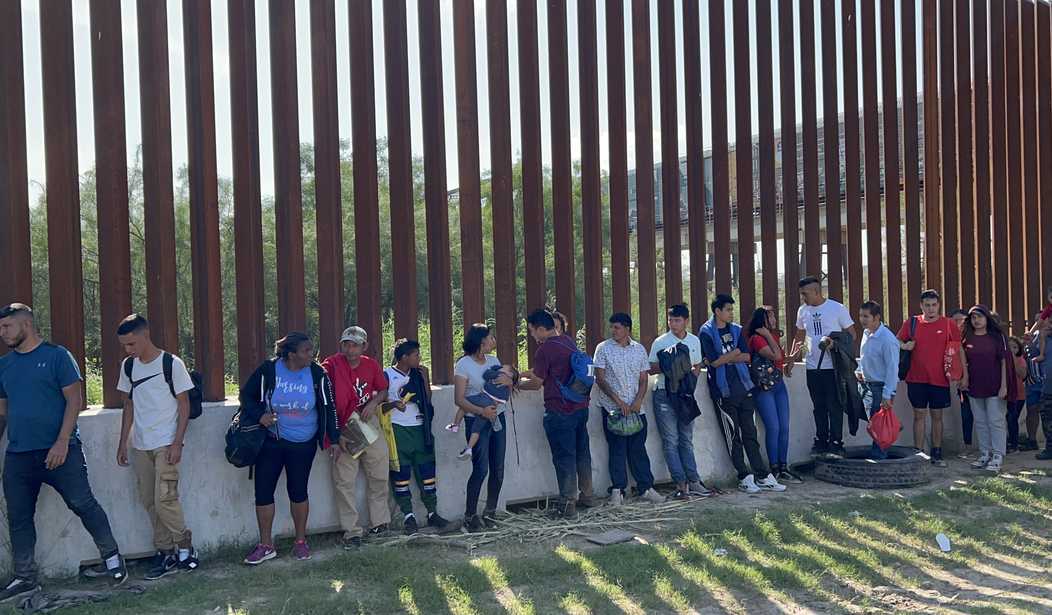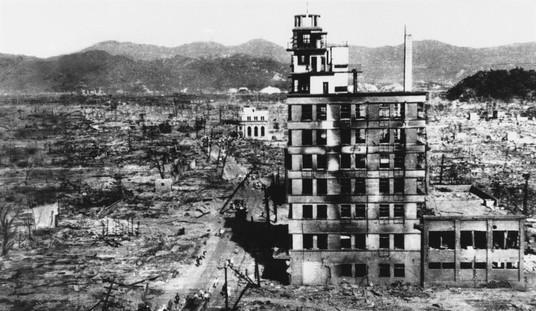EAGLE PASS, Texas — "Where are you from?" I asked, in Spanish, a man and his wife who were following a trail in the thick grass along the banks of the Rio Grande on Thursday. The pair were in a group of around 60 illegal immigrants who made it across the Rio Grande, despite there being a speaker nearby loudly playing a recording saying it was illegal to cross.
"Honduras," the man replied.
"The majority here are from Honduras?" I then asked.
"Yes," the man said.
The group was following a path to where where the concertina wire, installed by the Texas National Guard, ended so they could turn themselves in to Border Patrol. I was told by a source on the ground Border Patrol had cut a hole in the wire earlier in the week, a sign of the tension of the different missions Border Patrol has and the National Guard and state police have.
The group was brought to an area where the border wall ends so they could be processed and picked up by transportation.
Eagle Pass, Texas: Because this group of 60 illegal immigrants, mostly from Honduras, made it across the border, they are brought around where the border wall ends by the port of entry to be processed by Border Patrol. pic.twitter.com/oz0YVBaNwd
— Julio Rosas (@Julio_Rosas11) May 25, 2023
The day before, a group of Guatemalans had made it to the U.S. side. Hearing people from Central America willingly giving themselves up has been a bit of a shock. When Title 42 was in place, the main countries I would hear from those not attempting to avoid apprehension would be Venezuela, Colombia, Nicaragua, and Cuba. Haitians would be among them as well. Generally, I would only encounter Central Americans when they were trying to be "gotaways," but with Title 42 no longer in place, Central Americans feel confident enough to illegal cross the southern border so they can be processed and released into the United States.
Recommended
With the CBP One app applying to Venezuelans, Nicaraguans, and Cubans, they have largely stopped illegally crossing the border as they try to schedule a slot to go to a port of entry, but migrants in Mexico constantly complain how the app does not work or does not have enough slots. There is a chance that frustration can build to where they take their chances by crossing the border, which happened earlier this year.
Yuma, Arizona is also experiencing a steady flow of illegal immigrants, with countries as far away as China being represented.
AZ: Happening now: A group of about 100 migrants from several different countries including China crossed into Yuma this morning and are waiting to be transported/processed by Border Patrol.
— Ali Bradley (@AliBradleyTV) May 26, 2023
The line continues to grow.
Yuma is still experiencing more migrant encounters than it… pic.twitter.com/wUnWdRbhzk
With many nationalities still trying their luck through the CBP One app, those who can not sign up are still coming across illegally. While apprehensions are down from 10,000 a day, there are still historically high in the thousands. Any day that sees a 1,000 or more apprehensions is considered to be a crisis-level situation.

























Join the conversation as a VIP Member